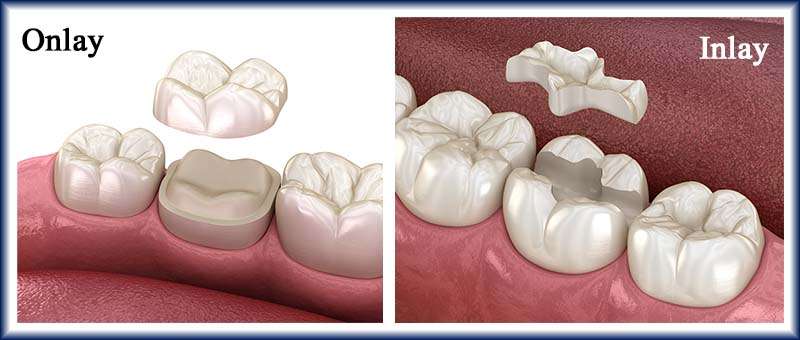
Dental inlay and onlay are state-of-the-art, conservative dental restorations. Traditional fillings can reduce the strength of a natural tooth by up to 50%. As an alternative, inlay and onlay, being bonded directly onto the tooth using special high-strength resins, can actually increase the strength of a tooth by up to 75%.
These can be thought of as dental procedures that are midway between a dental filling and a dental crown. They are normally used when there is not enough tooth structure to support a filling, yet there is also not enough damage to support a dental crown.
Materials for inlays and onlays
Dental inlays lie within the cusps on the chewing surface of teeth. A dental onlay, on the other hand, is more extensive than an dental inlay, and tends to cover multiple cusp areas. Both can be composed of gold, resin or ceramics. These pieces are bonded to the damaged area of the tooth. Traditionally, gold has been the material of choice for inlay and onlay. In recent years, however, porcelain has become increasingly popular choice of cosmetics dentistry due to its strength and color, which can potentially match the natural color of your teeth.
Inlay and onlay are applied in two dental visits. At the first visit, the old filling, or decay, is removed, and the tooth is prepared for the inlay / onlay. An impression of the tooth is made, and sent to a dental laboratory for fabrication. A temporary sealant is placed on the tooth.
To know more about out inlay/onlay treatment and whether you are a candidate for the sane, contact us.
